Now before you go jumping to conclusions, let me say that I have nothing against a dramatic play center.
In fact, it makes me pretty sad to see how few kindergarten classrooms have space for them anymore.
I even got choked up at a conference once (not unusual if you know me) as I described how many of the kitchen sets in my school district had been moved to basement storage (my own included!).
Pretty embarrassing, but I saw it as a sign of the times, and I really didn’t like where kindergarten was headed.
But even so, I currently don’t have a traditional dramatic play center in my classroom.
And here’s why!
Reimagining the Traditional Dramatic Play Center
Several years ago, I began to notice the literary richness that came from acting out stories that we read repeatedly each week through shared reading.

Children were:
- building oral language
- expanding vocabulary
- internalizing story structures
- using a story voice and expressive language
- practicing sequencing and story order
I knew that all of these skills were benefitting my kiddos by increasing their comprehension, supporting their writing in both language and organization, and improving their speaking skills.
And so I thought that if I turned my dramatic play center into a storytelling center, children would have more opportunities to build these skills with each new story that was introduced.
Enter the Storytelling Center
So I took a deep breath and sent the kitchen set to the basement graveyard, scooped up another teacher’s discarded bookshelf, and began to swap out the pretend play props of food and dress up clothes for story props and felt boards.
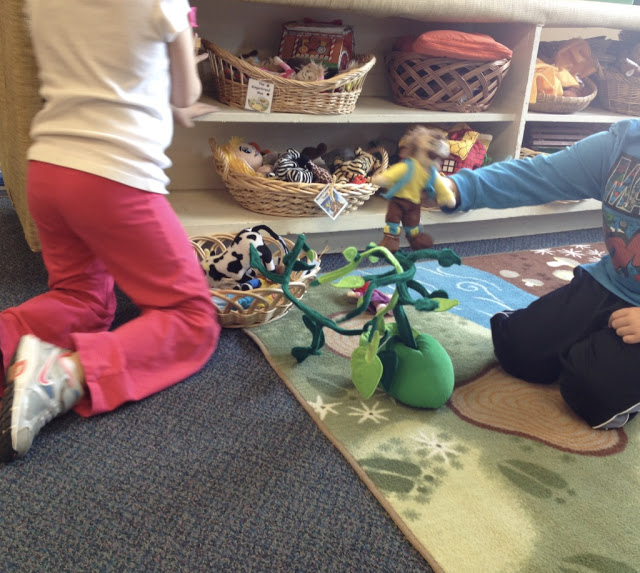
Each story was given its own basket and felt story mat. Props were gathered from a variety of places including my own children’s toys, thrift stores, and garage sales.
Some storytelling sets were purchased with school funds through catalogs such as Lakeshore Learning and School Speciality.
The children also created their own Fairy Tale Story Maps so they could take stories home and practice retelling them to families. This was also a great way to integrate social studies through map skills.

It didn’t happen overnight and I’m still always on the lookout for new props that kids could use to tell a new favorite story.
I renamed it the Storytelling Center to be explicit about what children were to do when they visited. Here’s a Start-up Guide that I wrote to help teachers with the setup process.
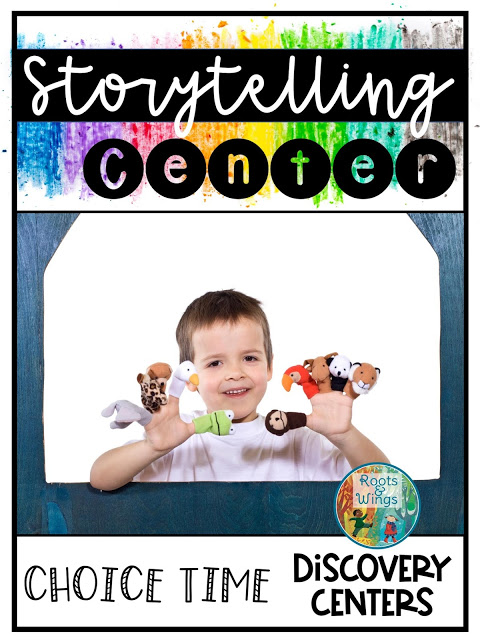
Expanding Into Content Areas
Over time, I began to expand the many ways children could use the storytelling center. In addition to retelling folk/fairytales and emergent storybooks, I started to see “stories” in other areas of the curriculum that could be told in the center to help children better grasp the content they were learning.
In November, the children retold the story of the Mayflower and the first Thanksgiving.
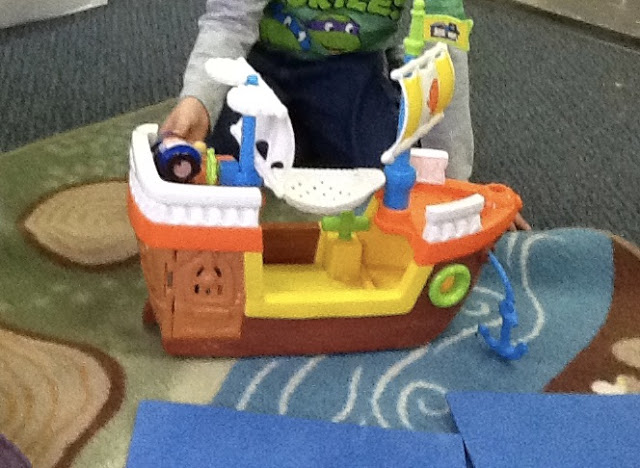
During a weather unit, they made up their own weather stories…
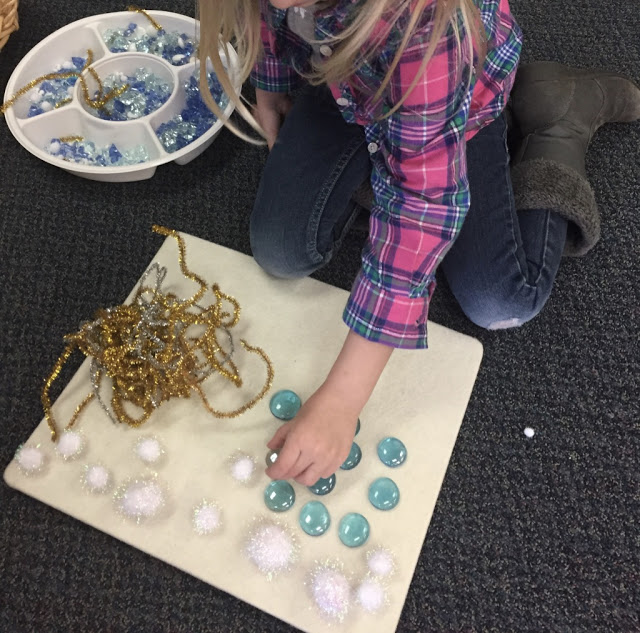
and told the story of how a snowflake was made.
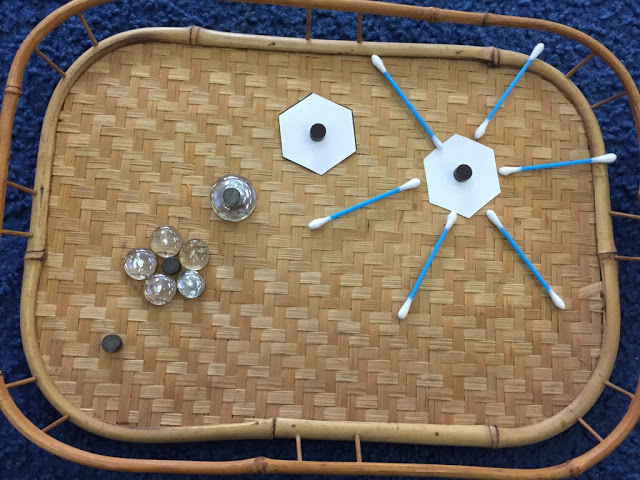
The possibilities are really endless as story is inherent to all of history, people’s lives (think biographies), and the science of how things are invented, made, grown, etc.
Children could tell the story of Martin Luther King, Jr., how a flower is grown, or the water cycle.
Still a Dramatic Play Center?
So, you may be asking yourself, “Isn’t this still a dramatic play center?”
In many ways, yes!
Both invite role play, explore pretend/make believe, utilize social-emotional skills and build communication.
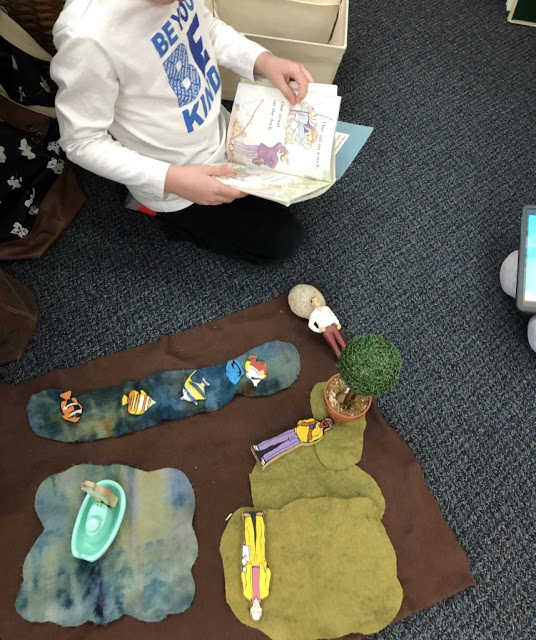
But what is traditionally known as a dramatic or pretend play center typically includes props that invite children to explore roles associated with home and community living. The center may be changed throughout the year to match students’ interests from a pet shop to a garden store to a dentist’s office.
I see value in both, but felt the storytelling center was a way to meet increasing academic demands while still keeping dramatic play alive and well.
In a perfect world (or a bigger classroom), you might offer both!
How do you incorporate dramatic play in your classroom?
Thanks for stopping by,

If you found this post helpful, and think others might too, please consider sharing it on your favorite social media platform.


 Playful Encounters with the Reggio Emilia Approach
Playful Encounters with the Reggio Emilia Approach Science Center Activities That Your Kiddos Will Love
Science Center Activities That Your Kiddos Will Love Reggio-Inspired Kindergarten: Classroom Learning Space
Reggio-Inspired Kindergarten: Classroom Learning Space Launching Choice Time Centers at the Beginning of the Year
Launching Choice Time Centers at the Beginning of the Year
This comment has been removed by a blog administrator.